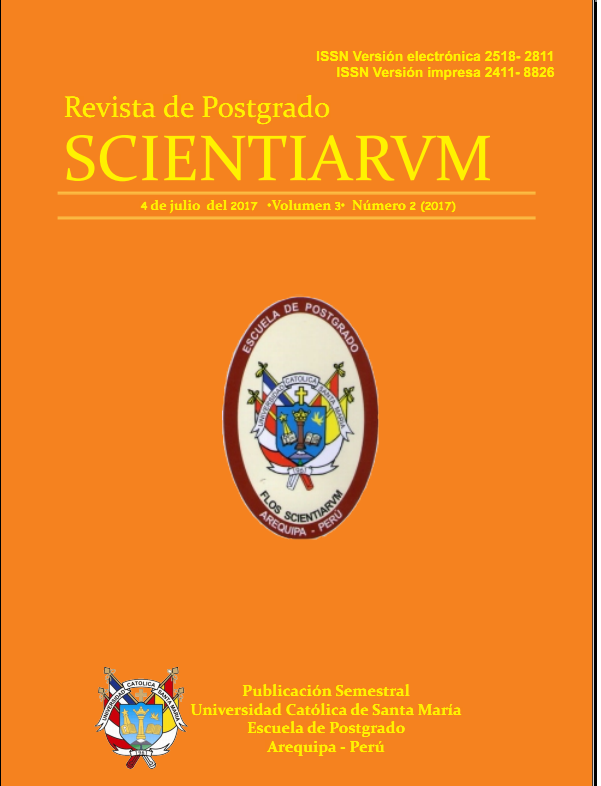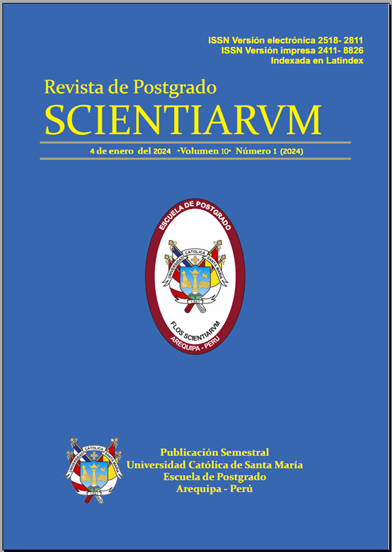TÉCNICA DEL PARALELISMO UTILIZANDO EL INSTRUMENTO XCP, CON BLOCKS DE MORDIDA INDIVIDUALIZADOS. PACIENTES PORTADORES DE IMPLANTES. AREQUIPA. 2017.
RESUMEN: Dentro de los parámetros existentes para el control de la evolución de implantes oseointegrados, uno de los más importantes es el examen radiográfico intraoral. Se ha establecido que para comparar diferencias entre radiografías de una misma zona a lo largo del tiempo, se requieren mantener las mismas relaciones geométricas, idealmente utilizando la Técnica del Paralelismo Individualizada con registros de mordida. El objetivo de este trabajo es evaluar la individualización de la Técnica del Paralelismo en el control radiográfico y en el tiempo de implantes oseointegrados, evaluar la distorsión de las imágenes radiográficas del implante con relación a otras técnicas radiográficas. Para ello, se obtuvo en 18 pacientes un registro de mordida, individualizando el instrumento XCP con blocks en silicona pesada de impresión, y se tomaron radiografías iniciales y a los 30 días posteriores, utilizando la técnica de la bisectriz (convencional) y con el instrumento XCP sin individualizar. Las radiografías fueron digitalizadas y a través de un software se obtuvieron valores de longitud y ancho, los cuales fueron comparados entre las tres técnicas utilizadas, y comparados a su vez entre la toma inicial y 30 días posteriores a esta, para evaluar así posibles distorsiones, tanto vertical como lateral. Al aplicar el análisis “t” de student y de la varianza, no se encontraron diferencias estadísticamente significativas. Como conclusión, la individualización del instrumento con blocks de mordida, permite la obtención de radiografías sin distorsión en el tiempo con relación a las técnicas convencionales realizadas.
Palabras clave: Implantologia, técnica del paralelismo, individualización.
ABSTRACT: Within the existing parameters for the control of the evolution of osseointegrated implants, one of the most important is the intraoral radiographic examination. It has been established that to compare differences between radiographs of the same area over time, it is necessary to maintain the same geometric relationships, ideally using the Technique of Individualized Parallelism with bite records. The objective of this work is to evaluate the individualization of the Technique of Parallelism in the radiographic control and in the time of osseointegrated implants, to evaluate the distortion of the radiographic images of the implant in relation to other radiographic techniques. For this, a bite registration was obtained in 18 patients, individualizing the XCP instrument with heavy silicone printing blocks, and initial radiographs were taken and 30 days later, using the bisector technique (conventional) and the XCP instrument. without individualizing. The radiographs were digitized and through a software, length and width values ​​were obtained, which were compared between the three techniques used, and compared in turn between the initial shot and 30 days after it, to evaluate possible distortions, both vertical as lateral. When applying the student "t" analysis and the variance, no statistically significant differences were found. As a conclusion, the individualization of the instrument with bite blocks allows the obtaining of radiographs without distortion in time in relation to the conventional techniques performed.
Key words: Implantology, parallelism technique, individualization
Revista Seleccionada
Julio 2017 Volumen 3 - Número 2 P 49-53
DOI: 10.26696/sci.epg.0059
Enlaces
CIENCIAS SOCIALES Y HUMANIDADES
DERECHO AL AGUA COMO DERECHO FUNDAMENTAL EN EL ORDENAMIENTO JURíDICO PERUANO
LA AUDITORIA FORENSE: FRAUDES Y DELITOS ECONÓMICOS
MODIFICACIÓN DEL ARTÍCULO 2014° DEL CÓDIGO CIVIL: MUERTE ANUNCIADA DEL SISTEMA REGISTRAL?
VALIDEZ DE LA PRUEBA DE JUICIO NULO
FUNDAMENTOS CONSTITUCIONALES DEL DERECHO FINANCIERO Y PRESUPUESTARIO. LA “CONSTITUCIÓN FINANCIERA”
FLEXIBILIZACIÓN LABORAL EN LA CONSTITUCIÓN DE 1993
CIENCIAS BIOLÓGICAS Y DE SALUD
PROBLEMÁTICA ACTUAL EN SALUD BUCAL EN EL PERÚ
RELACIÓN ENTRE BIOTIPO FACIAL Y LA VÍA AEREA FARINGEA EN PERUANOS
EFECTO DEL PLOMO EN RATAS PREÑADAS. Rattus norvergicus WISTER–AREQUIPA – 2014


